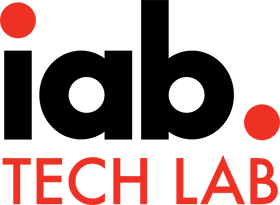SEGMENTS:2025 Madrid Agenda

SEGMENTS:2025 Madrid
To register for this event please visit the following URL: →
Date And Time
2025-07-18
Event Types
Event Category
Share With Friends
Speaker Schedule
-
2025-07-18Day 1
Welcome
Jason Thibeault, CEO of the Streaming Video Technology Alliance, opens the conference. He will cover house keeping and the schedule.
Delivering Stories At Scale: A Fireside Chat With Mark Ison of ITVx
SVTA CEO, Jason Thibeault, chats with Mark Ison of ITVx about the challenges of building and operating an OTT service at scale.
 Mark Ison
Mark Ison

Ads in Identity Crisis: Solving Ad Creative Confusion in Streaming Workflows
IAB Tech Lab saw a problem.
As streaming services embraced programmatic advertising, many ran into trouble at the point of ingest—specifically, understanding what an ad actually is. Without clear, consistent identifiers, it became nearly impossible to answer fundamental questions: Has this user seen this ad before? Is the ad in conflict with another in the same stream? As ads move through the supply chain, they’re often renamed, assigned new system IDs, or updated with inconsistent metadata. One ad can take on multiple identities—leading to overexposure, poor viewer experience, and missed business opportunities. In some cases, airing the wrong ad can even result in compliance violations.
Here’s how Tech Lab tried to address it.
IAB Tech Lab launched the Advanced TV Commit Group, recognizing that ad registries were designed to solve this very problem. Registries have long encouraged asset registration and the use of a unique creative ID—that was step one. But we found that the ID doesn’t always stay with the ad. Every platform in the streaming ad supply chain—the app, the device, the ad server, the measurement partner, and more—must consistently look for that ID, respect it in decisioning, and pass it forward in logs and requests. That insight led to the development of the Ad Creative ID Framework (ACIF) and the ACIF Validation API—a standards-based approach to ensure ad creative identity persists throughout the campaign lifecycle.
And here was the outcome.
The “F” in ACIF stands for Framework—and that’s intentional. From ad decisioning to measurement to creative reconciliation, ACIF lays the foundation for better ad experiences across streaming platforms and the full TV ecosystem. Released in March, ACIF is now being adopted to standardize creative identity across devices and partners. It’s enabling better frequency management, competitive separation, and regulatory transparency at the ingest stage and beyond. We’re now building momentum with advertisers, agencies, and platforms to adopt ACIF practices and bring clarity—and trust—into the streaming ad workflow.
 Katie Stroud
Katie Stroud

Orchestrating the Future of Media Workflows
In today’s rapidly evolving digital landscape, building a cloud-agnostic, flexible, and intelligently automated media technology workflow is no longer optional—it’s essential. The ability to deploy across public clouds, private data centers, or on-premises infrastructure gives media companies the freedom to scale, adapt, and innovate without compromise.
To stay competitive and avoid vendor lock-in, modern media workflows must be built on a modular architecture where every component is replaceable. This approach unlocks the full potential of both open-source solutions and commercial software vendors, offering the best of both worlds: independence, innovation, and professional support.
From encoding and packaging to ad insertion and delivery, there are high-quality software solutions available across the stack. Open-source tools provide transparency and customization, while vendor solutions often bring enterprise-grade performance, and 24/7 support. The key is media orchestration—a control layer that intelligently coordinates services, automates tasks, and enables interoperability across your workflow.
AI automation is another crucial piece of this puzzle. Leveraging machine learning for tasks like dynamically provisioning resources, auto-configuring encoding profiles, packaging templates, playout schedules, metadata enrichment, quality control, and dynamic distribution allows you to build smart workflows that scale intelligently and operate with minimal manual intervention.
This presentation will walk through how to design a next-generation video pipeline using a blend of open-source components and software vendors, tied together through orchestration and powered by automation. The result? A media workflow that is agile, vendor-neutral, and future-ready.
 Magnus Svensson
Magnus Svensson

The Evolution of Scalable Video Encoding: From On-Prem to Cloud to IaaS
Video encoding infrastructure has changed dramatically. It started with on-prem data centers—expensive, complex, but fully controlled. Then came the public cloud, offering scalability and speed but with high and unpredictable costs. A new model is emerging: infrastructure-as-a-service (IaaS), offering a balance of flexibility and cost efficiency.
This session will share real-world data on each approach's cost, performance, and scalability. We’ll present a step-by-step journey, showing why companies moved from private data centers to the cloud and why many are now shifting again for lower costs, better efficiency, and predictable scaling.
Attendees will see quantified outcomes from actual deployments, comparing encoding performance, network efficiency, and total cost of ownership across these models. This session is for video engineers, architects, and business leaders looking for the best path forward in video infrastructure.
 Leo Nieto
Leo Nieto

Break

MOQtail: Stream Responsibly
Media over QUIC (MoQ) is designed to revolutionize real-time media delivery—but getting it from spec to production is no smooth pour. In this talk, we share the journey behind MOQtail, our implementation of MoQ, and the operational realities of using it beyond live streaming. You’ll hear what worked, what broke and what we learned about streaming responsibly—one object at a time.
Software-Defined Edge Storage
Traditional edge architectures are built on single-purpose cache servers that are slow to scale, expensive to refresh, and painful to maintain. In this talk I’ll show how a software-defined edge-storage layer running on commodity hosts can unlock both performance and operational agility for streaming-video services.
To ground the discussion, I’ll present two real-world use cases that push caching far beyond conventional CDN applications
Inflight entertainment systems – how the same software defined edge storage runs on an aircraft’s server, seat-back screens, and even passenger or crew tablets.
Remote-site caching – serving oil rigs, mines, and pop-up news bureaus by installing the cache on existing desktop PCs or spare rack servers already on site, eliminating the need for dedicated hardware shipments and slashing start-up time from weeks to hours.
A “high-availability” server is still one failure domain, while our distributed edge-storage layer balances requests across all nodes so no single host is overloaded and the service stays healthy even as nodes join or leave the cluster. I’ll unpack the techniques that make this possible.
 Andreas Dotzler
Andreas Dotzler

Multi-everything: Our journey towards application syndication
Share the journey of NBCUniversal/Sky Global Platform team from the early days to a syndicated platform that powers Peacock, NOW, SkyShowtime and Showmax, reaching millions of customers across 70+ countries.
 Antonio Vieira
Antonio Vieira

Challenges in benchmarking video streaming systems
Live OTT video delivery is a challenging workload because of (i) the massive scale of delivery during popular events, and (ii) the fact that events implicitly synchronize users as they tend to connect simultaneously to watch the same popular game, same popular event. To reinforce that challenge, video delivery protocols (DASH / HLS) ensure that every video player discovers new video segments in a timely manner, resulting in more or less synchronized requests for content. This last point is further reinforced by low latency variants of DASH and HLS protocols that add an explicit clock (UTCTiming) or anticipated requests to rub network latency out. This creates burstiness on an already high-volume network traffic.
Putting systems under load to evaluate their performance, and the effect of the burstiness of the workload is critical to gain confidence before going into production. Yet, tools of the trade such as wrk/ab lack the ability to reproduce player behavior regarding (i) the timings of requests, (ii) reactions to errors or even minor delays in delivery (with aggressive retry), or (iii) low latency anticipated requests. In addition, to ensure proper benchmarking of systems that may perform manifest manipulation, on-the-fly video drm-ization or packaging, it is critical to deduce requests URLs for real segments from HLS and DASH manifests rather than relying on fixed URLs and content.
In this talk, we'll uncover some fo the practices at Broadpeak, including showing the benchmarking tools we've developed to support video-system benchmarking and explain how these have been instrumental in building efficient systems, without having to systematically rely on experimentation with production traffic. The benchmarking tools we've developed combine both (i) the power of a full-blown video player, (ii) and very high throughput for handling high-efficiency video servers benchmarking without requiring a full-rack of clients. Finally, we'll discuss the challenges and opportunities for making players less aggressive to CDN servers by taming requests bursts.
 Nicolas Le Scouarnec
Nicolas Le Scouarnec

Media over QUIC in Practice: Early Lessons from a Live Edge
As Media over QUIC (MoQ) moves from draft to deployment, new possibilities are emerging for real-time and low-latency streaming workflows. This talk will provide an early report from the field: what it looks like to stand up a MoQ implementation, where the protocol fits into the broader streaming ecosystem, and how new services are beginning to take shape around it.
Drawing on hands-on experience with a MoQ "tech preview" service at Cloudflare, the talk will touch on implementation tradeoffs, ecosystem alignment, and ongoing standardization. While the specific focus will evolve based on what proves most useful or surprising by the time of the event, attendees can expect a clear, practical orientation to where MoQ is heading and what it might soon make possible.
 Mike English
Mike English

Lunch

Breaking Mach-1 with your CAT token
The SVTA CAT (Common Access Token) standard initiative builds a one-size-fits-all token for CDNs. It does pursue efficiency on multiple fronts such as (i) efficient transmission through a compact (schema-less) binary encoding and (ii) efficient processing thanks to native (binary) encoding of integers avoiding string processing costs. Thanks to its expressiveness, it marks strong points for becoming the go-to token for Internet traffic in the future. One aspect in which the proposal remains weak however is the continued use of HMAC. HMAC has been the de-facto default symmetric authentication mechanism for tokens and CAT continues this tradition by mandating its support and using it as base recommendation. Yet, while HMAC algorithms are simpler this doesn’t mean that they are faster. Indeed, CPUs have heavily optimized dedicated instructions for AES. As a consequence the fastest MAC today are not HMAC but CMAC such as LeMAC or Aegis-256x2. In this talk, we evaluate the performance of MAC be they HMAC or CMAC on a variety of server vendors & generations, and with different token lengths in order to showcase the potential benefits of switching away from HMAC. With a little twist, your CAT will soon travel at Mach-4.
 Opale Duviver
Opale Duviver

Modernizing P2P for OTT: Real-World Lessons in SSAI and Speed
Hybrid P2P-CDN delivery saw significant growth between 2010 and 2020, driven by the rapid adoption of the WebRTC DataChannel API in browsers. P2P delivery enables more efficient content distribution at a lower cost, reduces overall power consumption, and improves peak traffic management.
However, since the last decade, streaming technologies have rapidly evolved, introducing enhanced security, personalized content, new use cases, and lower latency, making it more challenging to maintain a plugin on the client side. The question now is: how can we maintain efficient P2P delivery in 2025 while meeting modern requirements such as DRM, SSAI, CMCD, Token, low latency, content steering, and native mobile applications?
In this presentation, we will demonstrate how we successfully integrated P2P delivery into modern OTT platforms, share the challenges we encountered by focusing on low latency and SSAI, and share real-world insights from production deployments.
 Mathias Lacaud
Mathias Lacaud

Panel: Code to Playback: The Challenges and Pitfalls of Player Development
It may seem innocuous that a few lines of javascript can render streaming video on a myriad of devices. But developing a streaming video player that meets all the business requirements, can be deployed across devices, and includes the features that will keep users engaged, is very challenging. From including SDKs to capturing data to ensuring CDN switching and low latency rendering, player development and management is a challenging element of operating a streaming platform. In this panel of industry player experts representing both commercial and open-source players, attendees will participate in a discussion about many of these challenges and how they can be overcome.
 Thasso Griebel
Thasso Griebel

 Alvaro Velad Galvan
Alvaro Velad Galvan

 Rob Koenen
Rob Koenen

 Nicolás Levy
Nicolás Levy

Break

CTV Ad Formats: Herding Heroes, Not Cats
IAB Tech Lab saw a problem.
As CTV platforms looked to create better ad experiences during playback, they often hit a wall: there was no consistent way to implement emerging ad formats like overlays, interactive ads, or pause ads. Every new idea required custom development, bespoke integration, and coordination across multiple vendors—driving up costs and slowing innovation. This fragmentation made it difficult to scale premium ad formats across devices, leading many platforms to fall back on standard pods that don’t take full advantage of the connected environment.
Here’s how Tech Lab tried to address it.
Through our Advanced TV initiative, we launched CTV Ad Format Hero, a project designed to standardize and simplify the implementation of high-value ad formats in streaming. We worked with platforms, device makers, and creative technology partners to define a consistent language and rendering guidance for emerging ad types. The goal: make these formats easier to build, buy, and support at scale.
And here was the outcome.
The result is a set of clearly defined, interoperable CTV ad formats that can be reliably delivered and rendered across the ecosystem. With these standard building blocks, platforms can accelerate the rollout of innovative ad experiences while reducing engineering lift and creative guesswork. The Ad Format Hero initiative is laying the groundwork for better ad experiences at the playback stage—ones that match the quality and polish viewers expect from streaming.
 Katie Stroud
Katie Stroud

Non-Linear Streaming Ads: The Present & The Future
This session is going to dive into the world of non-linear ads in streaming content. Non-linear and concurrent ad solutions go beyond the basic ad experience and open the door for a less intrusive, more engaging, ad experience while also increasing the ad opportunities for content like soccer/football as an example. They are also one of the main driving forces behind Server Guided Ad Insertion (SGAI). SGAI offers a powerful foundational mechanism for powerful enhanced ad experiences but much of this can be new frontier for implementors. This session will cover the motivation behind the key trend as well as what is coming (or needed) in the future as far as standards and what challenges are faced to make it a reality in players, applications, and platforms.
Structured Concurrency Framework for a Short-Form Video Player
Developing a contemporary video player involves significant hurdles, particularly in managing concurrent code execution and ensuring extensibility. This talk details our solution to these prevalent software engineering challenges, demonstrating its application in substantially enhancing an existing video player product.
While structured concurrency frameworks have proven valuable in back-end systems and front-end state management, their integration into a domain like a video player—requiring both extensibility and the flexibility to readily accommodate new platforms or features—demands meticulous design. Video Player SDK users frequently need to incorporate custom behaviours for specific scenarios or handle non-standard manifests. However, conventional architectures often complicate such modifications, increasing the risk of regressions and necessitating significant rework.
The Phoenix framework provides a revolutionary answer by being architected from the outset with structured concurrency, an effect system, and a plugin-first approach. This framework delivers exceptional adaptability and extensibility, effectively addressing a modern set of engineering challenges.
By structuring code into independent plugins with dependency injection and organising asynchronous operations within clearly defined scopes featuring structured concurrency and explicit lifecycles, the framework mitigates resource leaks and guarantees that related tasks are either completed or canceled together.
This framework was employed to create a video player aimed at highly customisable playback applications. The advanced flexibility offered by the Phoenix framework enables the creation of remarkably lean player bundles tailored to specific use cases. As a practical illustration, we evaluated the size and performance for short-form playback. The findings for this player highlight the advantages of such a framework in terms of both performance and size.
 Thomas Offner
Thomas Offner

Optimizing Video Streaming: Enhancing Quality and Reducing Energy Consumption through Luminance Management
The climate crisis demands urgent attention to the environmental footprint of information and communication technologies (ICT). With video streaming accounting for a significant portion of Internet traffic, it is essential to explore sustainable solutions for reducing carbon emissions in this domain.
This presentation will delve into two innovative approaches for optimizing the energy consumption of OLED TVs, particularly focusing on screen and video brightness.
First, Server-Side Brightness Adjustment. Using FFmpeg, we studied how brightness modifications impact viewer experience and energy use through a comprehensive subjective test. Our findings reveal that reducing video luminance by up to 10% can yield energy savings of around 14% without compromising visual quality for specific content. However, for medium-brightness videos, a reduction of only 4% is recommended to maintain perceptual integrity.
Second, FAMIUM GREENVIEW: We introduce FAMIUM GreenView, an integrated library within streaming applications paired with a backend system that customizes settings based on real-time context (content, device, display type). This AI-driven model optimizes playback for energy efficiency, leveraging data from our FAMIUM Green Streaming Measurement Framework and FAMIUM Stream Analytics.
 Minh Nguyen
Minh Nguyen

The Right Interaction at the Right Time - How to enable a more personal and more relevant (ad) streaming experience
By scrutinizing each video scene, AI Scene Analysis generates rich metadata that unlocks a deeper understanding of the video's content. Being able to categorize a scene by identifying objects, people, or even emotions not only enables content categorization, e.g., for later usage or archiving, but also allows applications to interact with viewers in a more tailored fashion or gain relevant insights about user behavior related to video context. Up until now, extracting and categorizing metadata from media content has been an expensive and time-consuming manual effort. Leveraging machine learning enables us to speed up the analysis significantly and extract more features more accurately.
When leveraged in conjunction with Bitmovin's Contextual Advertising solution, extracted metadata is designed to enhance ad revenue. By enabling a higher degree of personalization, advertisers can deliver more relevant ads to viewers, thereby increasing user engagement and boosting overall ad effectiveness. AI Scene Analysis and Contextual Advertising solutions represent a significant advancement in video content analysis and ad placement, offering content providers and advertisers a powerful tool to unlock the full potential of their video content. By leveraging the power of machine learning platforms like Amazon Bedrock, our technology enables a more sophisticated and effective approach to video advertising, delivering benefits to all stakeholders in the digital advertising ecosystem.
 Reinhard Grandl
Reinhard Grandl

Happy Hour
Join us for a Happy Hour to end SEGMENTS:2025 Madrid!







